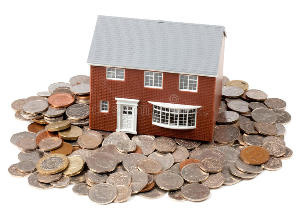
It is the highest level of profit on record and at the same time profit making sales between January and March reached 98.9% the highest in the 25-year history of CoreLogic’s data series.
Most of the gain was for homes that had been held for a long period, CoreLogic’s Pain and Gain Report revealed.
At the previous peak in mid-2007, the median resale gain was just $129,500, says Kelvin Davidson, CoreLogic’s chief property economist.
On the reverse side, the median resale loss in the first quarter of this year was $20,000.
“Almost everybody who resold in between January and March did so above their purchase price regardless of location, buyer or property type,” says Davidson.
“The figures are stronger than ever, and, of course, consistent with property values, which have been on an unbroken upwards trend for a decade.
“Capital gains intensified in the first three months of this year with a 7.2% rise, boosted largely by low mortgage rates and a tight supply/demand balance.
“In that kind of environment, it’s logical that most owners will get a price above what they originally paid.”
By location, property type, and by owner type, the latest results are pretty even, says Davidson.
“In other words, regardless of whether it was a house or apartment being resold in the first quarter, or by an investor or owner-occupier, the ‘gain’ figures were high – and they were also strong regardless of which city/area they were in.”
Few losses
Davidson says for most owner-occupiers unless they are downsizing or moving to a cheaper location, those gains are simply recycled back into the next purchase – and would often be accompanied by more debt.
“It’s different for investors though, with some potentially choosing to take their gains,” he says.
It remains uncommon for houses, as opposed to flats or apartments, to make a gross loss at resale, with this occurring for less than 1% of resales in the first quarter of this year.
For context, in mid-2001, only 70-75% of house resales made a gross profit, and in early 2011 the figure was 80-85%.
Davidson says there were still 1.1% of sellers that got a price below what they originally paid.
“But that’s a small share in a historical context, and is consistent with other evidence that mortgage distress across the country is low.”
For example, he says, banks’ non-performing loan ratios are low, mortgagee sales are almost non-existent, and the mortgage payment deferral scheme wound up on March 31 without any obvious problems.
“If/when mortgage rates start to rise – and there are already signs that this is happening for longer fixed periods – the situation may not look quite so rosy for mortgage distress, but significant change isn’t on the horizon just yet.”
Apartments solid
Turning to apartments, the figures were also solid. In fact, only 5.8% of apartment resales in the first quarter were made below the original purchase price, or in other words, 94.2% saw a gross profit.
That profit figure was up from 90.5% in the last three months of 2020 and matched a brief peak seen in Q2 2017 – which itself was the highest since the mid to late 1990s.
For context, there have been times in the past, eg mid-2000, late 2008, mid-2010, when only about 50-55% of apartments were sold for a gross profit.
Davidson says it needs to be acknowledged the economics of investment have recently got tougher for investors.
Deposits of 40% are now required, the bright-line test has been extended, and interest deductibility is being tapered/removed for current holdings and also further purchases of existing properties, although new-builds are exempt.
“Given investors tend to have higher representation in the apartment sector than standalone houses, it wouldn’t be a surprise to see the ‘gain’ figures underperform for apartments compared to houses over a 12-18 month horizon.”
While CoreLogic doesn’t expect the taper/removal of interest deductibility to cause a wholesale sell-off by existing landlords, some may need to push through a quicker sale.
Although the data might also be strong for the next quarter, Davidson says the country is now more or less at a turning point.
He anticipates some softening in the figures by the end of the year, as market conditions ease and value growth slows.
Main centres
The national trend of strong property “gain” and minimal “pain” was replicated in all of the main centres in the first quarter of this year, consistent with the continued rebound seen for sales activity and property values.
Among the main centres, Christchurch still has the lowest share of property resales being made above the original purchase price. But the first quarter figure of 97.6% was its highest for almost six years and in reality wasn’t much different to latest figures for the other main centres.
Across the other main centres, the share of property resales made for a gross profit increase in Auckland, Wellington and Dunedin.
Profit-making resales dipped slightly in Hamilton and Tauranga, however they are still high to historical standards and the sales made below the original purchase price related to only a small handful of deals, says Davidson.
In terms of the size of resale gains and losses, Wellington went through the $500,000 mark in the first quarter, hitting $506,000 – up sharply from $446,500 in Q4 2020.
Auckland’s median resale gain was $455,000, while Tauranga was also above the $400,000 mark at $402,500.
Hamilton and Dunedin were both above $300,000, while Christchurch lags a bit behind on $196,250, but up significantly from $157,750 in Q4 last year.
Meanwhile, resale losses were less common and far smaller than gains – eg $7,500 in Hamilton and $12,500 in Dunedin.
How the main urban areas fared
“The general rebound in property sales and values across the country in the past three to six months, and the flow-on effects that this has had on resale performance, can also be seen across the main urban areas in the top of the North Island,” says Davidson.
Upper North Island
Gisborne achieved a second, consecutive quarter of 100% of property resales being made above the original purchase price.
In Rotorua and Whangārei, the share of profit-making resales was 98.5% or above in the first quarter.
“In dollar terms, the gains were also strong. In each of these three areas, the median resale profit topped $300,000 and in Gisborne was more than $350,000.
“Multiplied out across the number of sales, total gross profits in Whangārei were very close to $100 million in the first quarter,” says Davidson.
Lower North Island
Each of the markets around the lower North Island showed solid performance in terms of property resales in the first quarter of the year, with Hastings, Palmerston North, and Whanganui all having 100% of resales made above the original purchase price.
New Plymouth’s figure improved from 98.0% in Q4 2020 to 98.5% in the first quarter, albeit Napier’s result softened a bit.
However, the 1.3% of resales in Napier that didn’t get more than the original purchase price related to only a tiny number of deals.
The high frequency of resale profits in these areas in the first quarter was matched by the size of the gains.
Hastings and Napier each had a median resale profit of about $410,000, while Palmerston North and Whanganui were in excess of $300,000, and New Plymouth more than $250,000.
South Island
Across the key South Island centres, property resellers generally remained in a strong position in the first quarter of the year.
Queenstown saw its share of resales made for a gross profit rise from 99.1% in Q4 2020 to 99.4% in the first quarter, while Nelson’s latest figure was 99.5%, and Invercargill was also strong at 98.9%.
Meanwhile, the size of resale losses remained relatively small around the South Island and the gains large.
The median profit in the first quarter for Queenstown was $428,750, with Nelson topping $300,000 and Invercargill at $199,750.
Outside the main urban areas
Generally speaking, property markets around regional New Zealand fared well in the first quarter of the year, with profit making resales common.
The bulk of the provincial markets had no loss-making property resales, with only Buller and the Mackenzie District showing weaker results.
But even in those two areas, where the share of profit-making resales was “only” 91.8% and 91.3% respectively, the remaining percentages where the resales made losses only related to small numbers of deals – five or less.
Meanwhile, parts of Canterbury that had been recording more significant shares of resales made for a loss up until recently – including Selwyn and Waimakariri – turned that around in first quarter, and both had less than 1% of resales at a gross loss.




Comments
No comments yet.
Sign In to add your comment